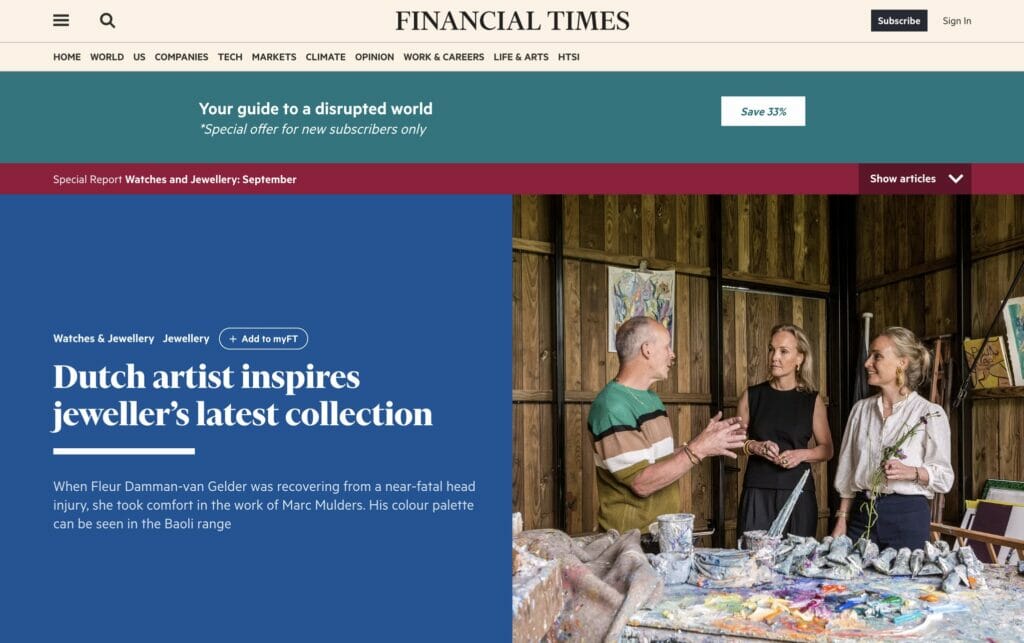Marc Mulders (Tilburg, 1958)
The art of Marc Mulders is like a garden: colorful and abundant, with soft and light hues predominating. He paints in daylight, in an open stable, standing at the threshold between the darkness of the stable and the surrounding meadows of flowers.
In his earlier work, from the 1980s, dark colors are the dominant tone; he paints religious motifs such as the Pieta and the Last Supper, along with still lifes of dead game, fish and flowers. During this period he is greatly influenced by the work of Chaïm Soutine. While drawn to painting abstractly, Mulders does need the materiality of animals and flowers to paint.
An important turning point is his move, in 2008, from the city (Tilburg) to a farm on the country estate Baest. The garden and the flower meadows around his studio develop into a key motif in his oeuvre. And because of this, his palette gradually becomes lighter. The fields of flowers inspire him to render flowers in a more abstract way, in which the interplay of sunlight on these fields becomes prominent.
Painters such as Willem de Kooning, Helen Frankenthaler and (the later work of) Claude Monet are his main source of inspiration. So it comes as no surprise that he calls his own gardens and flower meadows 'my own private Giverny', referring to the famous gardens of Claude Monet in Giverny.
In addition to his focus on the garden/flower meadow as a motif, Marc Mulders has, for years, been interested in Persian miniatures, in which gardens also play a significant role. Their design, color schemes and symbolism have profoundly influenced the paintings of Mulders, and as a result many of his paintings bear titles such as Persian Garden, Let the Desert Bloom and Persian Juno Iris. These Persian miniatures have a strong influence on the arrangement of areas of color and motifs in his work.
